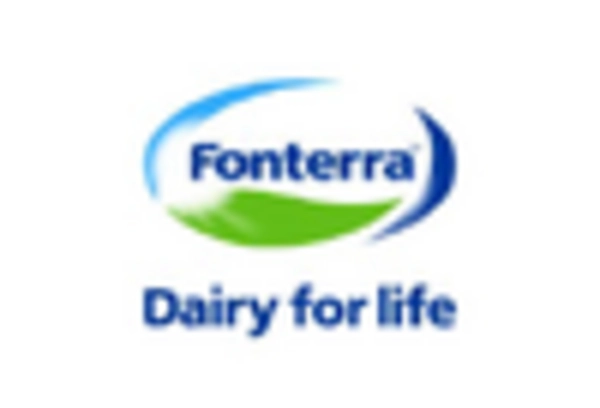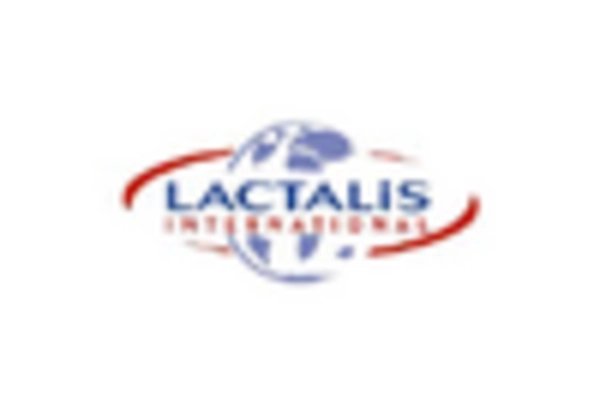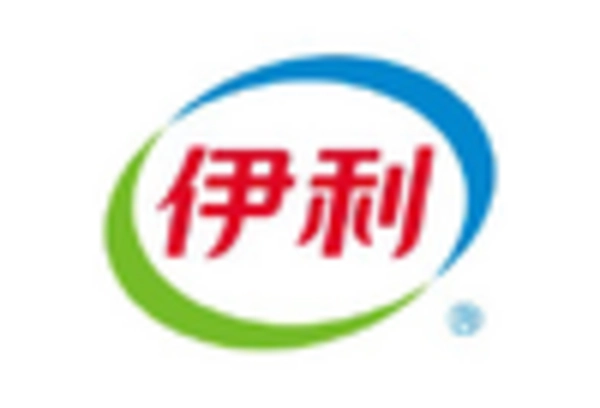Rising Demand for Probiotics
The increasing awareness of the health benefits associated with probiotics is driving growth in the fermented milk market. Probiotics are known to enhance gut health, boost immunity, and improve digestion. As consumers become more health-conscious, they are actively seeking products that contain live cultures. According to recent data, the probiotic segment within the fermented milk market is projected to grow at a CAGR of approximately 8% over the next five years. This trend indicates a robust demand for fermented milk products that are rich in probiotics, thereby influencing manufacturers to innovate and expand their product lines to cater to this growing consumer preference.
Sustainability and Ethical Sourcing
Sustainability concerns are becoming a pivotal factor in consumer purchasing decisions, particularly in the food sector. The fermented milk market is not exempt from this trend, as consumers increasingly prefer products that are sourced ethically and produced sustainably. Research indicates that around 45% of consumers are willing to pay a premium for products that align with their values regarding environmental impact. This shift is prompting manufacturers to adopt sustainable practices, such as using eco-friendly packaging and sourcing ingredients from responsible suppliers. As sustainability becomes a core value for many consumers, the fermented milk market is likely to evolve, with brands that prioritize ethical practices gaining a competitive edge.
Convenience and On-the-Go Consumption
The fast-paced lifestyle of consumers in the US is contributing to the demand for convenient food options, including fermented milk products. Ready-to-drink formats, such as yogurt drinks and portable packaging, are becoming increasingly popular. This shift towards convenience is evident in the sales data, which shows that ready-to-drink fermented milk products account for nearly 30% of the total market share. As busy consumers prioritize quick and easy meal solutions, The fermented milk market is likely to see continued growth in this segment. This growth will prompt manufacturers to enhance their distribution channels and marketing strategies to reach a broader audience..
Increased Focus on Clean Label Products
There is a growing trend among consumers towards clean label products, which are perceived as healthier and more natural. This shift is impacting the fermented milk market, as consumers are increasingly scrutinizing ingredient lists and seeking products with minimal additives and preservatives. Data indicates that approximately 60% of consumers prefer products that are labeled as organic or free from artificial ingredients. This demand for transparency is prompting manufacturers to reformulate their offerings, ensuring that they align with consumer expectations for clean and wholesome products. As a result, the fermented milk market will likely experience a surge in clean label options, catering to the health-conscious demographic..
Diverse Flavor Profiles and Customization
The desire for unique and diverse flavor experiences is influencing the fermented milk market. Consumers are increasingly seeking products that offer innovative flavors beyond traditional options. This trend is reflected in market data, which shows that flavored fermented milk products have seen a growth rate of 12% in recent years. Manufacturers are responding by experimenting with exotic ingredients and flavor combinations, allowing for greater customization. This not only attracts adventurous consumers but also encourages brand loyalty as customers seek out new and exciting taste experiences. The emphasis on flavor innovation is likely to remain a key driver in the fermented milk market.

















Leave a Comment